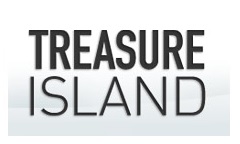
Treasure Island Project 2/3

Community Benefits
A Connected, Transit-First Community
Residents of Treasure Island will enjoy rapid access to downtown San Francisco and to the East Bay. Transit options will include: a quick ten-minute ferry ride to San Francisco; expanded bus service to San Francisco and the East Bay; car access via the Bay Bridge; and on-island shuttles serving Treasure Island and Yerba Buena Island. Walking paths, promenades and bike trails will connect all areas of Treasure Island, encouraging residents to leave their cars and enjoy the beautifully landscaped setting.
Affordable Housing
At least 25%, or 2,000, residential units will be offered at below market rates. This figure could be increased to 30% if the State of California allows the City of San Francisco to capture a higher amount of the additional tax increments that will be generated by the increased value of the island as it is redeveloped. The total program is expected to cost $461 million.
Of the total number of affordable housing units:
- 435 units will be offered to the formerly homeless through Treasure Island Homeless Development Initiative (TIHDI);
- 316 units will be set aside for inclusionary workforce housing;
- 1,249 units at a range of affordable incomes.
Additional benefits include: service contracts and social enterprise opportunities for TIHDI and a transition housing program for existing residents.
Financial Contribution
San Francisco’s budget analyst concluded in May 2011 that the project will generate $95 million in net revenues to the general fund over 20 years. The fiscal risk and up-front investment costs are carried entirely by the private developer.
Seismic safety
The soil underlying the redeveloped Treasure Island will be consolidated and densified, making it resistant to liquefaction and settlement. The planned geotechnical improvements will make Treasure Island a safe and appropriate place for a new San Francisco neighborhood.
Flood Protection
The project was designed to manage flooding risks from all sources, including rising sea levels and tsunamis. The plan was engineered by Moffatt & Nichol Engineers, the region’s premier marine engineers, and has been recognized by the Bay Conservation and Development Commission (BCDC) and the State of California for its innovation and quality. The planned improvements, when constructed, will make Treasure Island better prepared for sea level rise than much of the edge of the City’s northern waterfront.
Other Benefits
- 2,000 annual construction jobs and 3,000 permanent jobs.
- 25% targeted to low‐income or formerly homeless San Franciscans
- 50% targeted to San Franciscans
- $3.8 million for job training and hiring programs.
- Contracting opportunities for small businesses.
- New and/or upgraded public facilities, including a joint police/fire station, a school and other community facilities.
- New and/or upgraded public utilities, including water storage and distribution system, wastewater collection and treatment, recycled water system, storm-water collection and treatment and electricity and gas distribution systems.
- Approximately 300 acres of parks and public open space (this represents approximately two-thirds of the project area).
- New and/or upgraded streets and public ways.
- Bicycle, transit and pedestrian facilities.
- An Intermodal ferry quay/bus transit center.
- A town center providing retail and community services to residents and visitors.
- Revitalized historic buildings.
- Retention of existing chapel, gym-fitness center, Delancey Street Life Learning Academy
- Land for the Treasure Island Sailing & Environmental Educational Centers.


